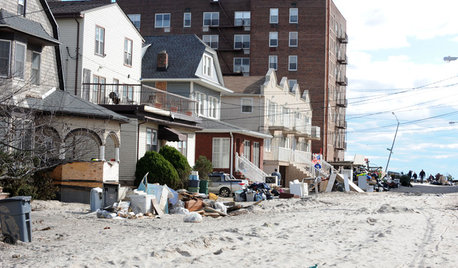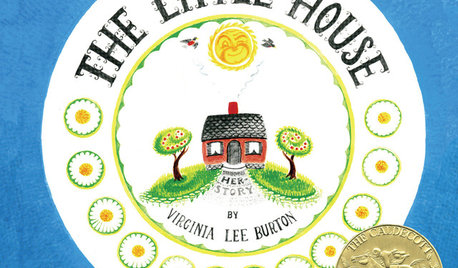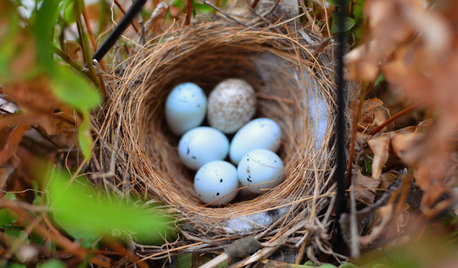http://reference.aol.com/globalwarming/_a/climate-change-the-view-from-the-patio/20060606092609990001
Climate Change: The View From the Patio
By Henry Fountain
The poison ivy plant has been shown to produce a more toxic poison when exposed to higher levels of carbon dioxide.
(June 4, 2006) -- Scientists had some sobering news last week about the potential impact of climate change, and it didn't come from the foot of a shrinking glacier in Alaska or the shores of a tropical resort where the rising ocean is threatening the beachfront bar.
It came from a North Carolina forest, at an experimental plot where scientists can precisely control the concentration of carbon dioxide in the air. Duke researchers discovered that when exposed to higher levels of CO2, the greenhouse gas released in ever-increasing quantities from human activity, poison ivy goes haywire.
The researchers found that the weedlike plant grew much faster under CO2 conditions similar to those projected for the middle of the century. The plant also produced a more noxious form of its rash-causing chemical: a more poisonous poison ivy.
"We were surprised to find it," said William H. Schlesinger, a Duke professor who took part in the study.
While much of the discussion of climate change focuses on the big picture of rising sea levels and increasing global air and ocean temperatures, the Duke finding helps explain the smaller picture. Climate change may be a real nuisance in the backyard.
Poison ivy is only the latest entry on a growing list of pests, both plant and animal, that may be nurtured. Japanese beetles, a voracious eater of turf and trees, live longer under higher levels of carbon dioxide. The ranges of other invasive insects, like fire ants, are expected to increase as the planet warms. Disease-carrying ticks have already been shown to have moved northward in Sweden. Mosquitoes could fly farther, too.
Poplars and birch trees are flowering earlier in New England, and some global warming forecasts predict that the region's sugar maples will eventually disappear. Elevated carbon dioxide has been shown to cause ragweed and certain pine trees to produce more pollen. "It's not a pretty picture," said Paul R. Epstein, associate director of the Center for Health and the Global Environment at Harvard Medical School.
While there is still disagreement over the extent of global warming and its potential to reshape the environment, Dr. Epstein noted that many of the changes that he and other scientists are tracking fall outside that debate. "They're just a result of carbon dioxide stimulation, something that no one disputes is rising," he said.
Poison ivy isn't the only plant whose growth is encouraged by additional carbon dioxide. In the Duke experiments, Dr. Schlesinger said, the trees themselves show an increase in growth under carbon dioxide concentrations roughly 50 percent higher than current conditions. "If you're a timber products company, you look at that favorably," he said.
Dr. Epstein, who has studied ragweed growth under increased carbon dioxide, said, "There are some side effects for public health as well as ecology." More cases of hay fever are likely to result from the additional pollen from ragweed and pine cones; a study at the same Duke forest showed that both plants produced more pollen under higher levels of CO2.
Increases in asthma have already been detected, Dr. Epstein said, as pollen and other airborne allergens combine with particles from truck and bus exhaust to reach deep into the lungs.
Jonathan Patz, of the Nelson Institute and the department of population health sciences at the University of Wisconsin, summed up the situation. "The bottom line is that there are many major health outcomes that are highly sensitive to climate change," he said.
But climate change, Dr. Patz said, involves more than just temperature. Extreme weather harsher droughts on one end, and heavier rainfalls on the other  is expected to become more common.
That could lead to more outbreaks of disease. Dr. Patz led a study of episodes of waterborne disease in the United States in the second half of the 20th century and found that most of them followed periods of very heavy rainfall. One of the worst cases was an outbreak of parasitic infections in 1993 that sickened 400,000 people in Milwaukee. This was preceded by the heaviest rainfall month in the city in 50 years.
More intense rainfall "is something that water managers are going to have to take seriously," Dr. Patz said.
Extreme dry conditions can lead to disease as well. Dr. Epstein said that the 1999 outbreak in New York of West Nile virus coincided with a severe drought. The mosquito that transmits the virus between animals and humans finds partly evaporated, filthy pools of water more suitable for breeding.
Other insects flourish in the seesawing between extreme wet and extreme dry conditions, Dr. Epstein said. "That's exactly what the bugs love," he said. "They like it dried out, and then rain that floods an area" and creates pools of standing water for breeding. "In the Northeast, that's what gives you outbreaks of equine encephalitis," he said, referring to another mosquito-borne disease.
Mosquitoes are pests, of course, as are Japanese beetles, ticks and poison ivy, for that matter. "It's not at all surprising that pests get pestier" because of changing environmental conditions, said May R. Berenbaum, head of the department of entomology at the University of Illinois at Urbana-Champaign, who was involved in the Japanese beetle studies. "They have this opportunistic life history."
Thomas E. Lovejoy, president of the Heinz Center, a Washington research group on environmental policy, said: "When you're sending ripples through the ecosystem, I think what you do is tilt the balance a bit in favor of the pests. It begins to sound sort of biblical."
Mr. Lovejoy said that the increase in nuisance species, and the potential disappearance of other, much-prized species, may help raise awareness of climate change.
"The really strong reaction in the New England states about the prospect of losing the sugar maple is a great example of that," he said.
"Part of that is that it is a fall tourist magnet, and it gives us a little bit of syrup in the spring. But the reaction also is, 'Hey, this is part of where I live, and it won't be there.' "
Copyright © 2006 The New York Times Company.
















tsmith2579
bcb77Original Author
Related Professionals
Wrentham Landscape Architects & Landscape Designers · East Chicago Landscape Contractors · Elkridge Landscape Contractors · Framingham Landscape Contractors · Monterey Landscape Contractors · Oklahoma City Landscape Contractors · Smyrna Landscape Contractors · Selma Landscape Contractors · Hueytown Landscape Contractors · Callaway Siding & Exteriors · Colorado Springs Siding & Exteriors · Eau Claire Siding & Exteriors · Fairfax Siding & Exteriors · Orange County Siding & Exteriors · Somersworth Siding & Exteriorsbama35640
Carol Henry
tsmith2579
bamadave
catbird
catbird